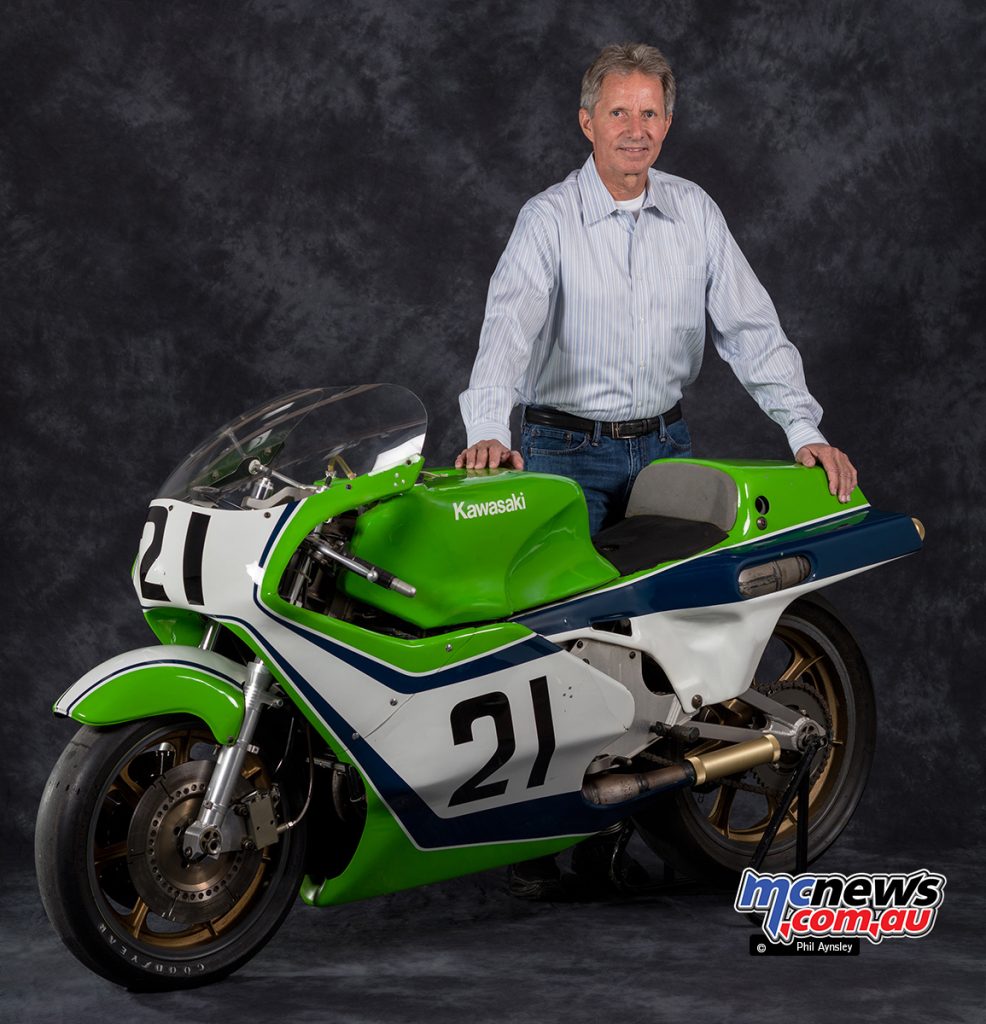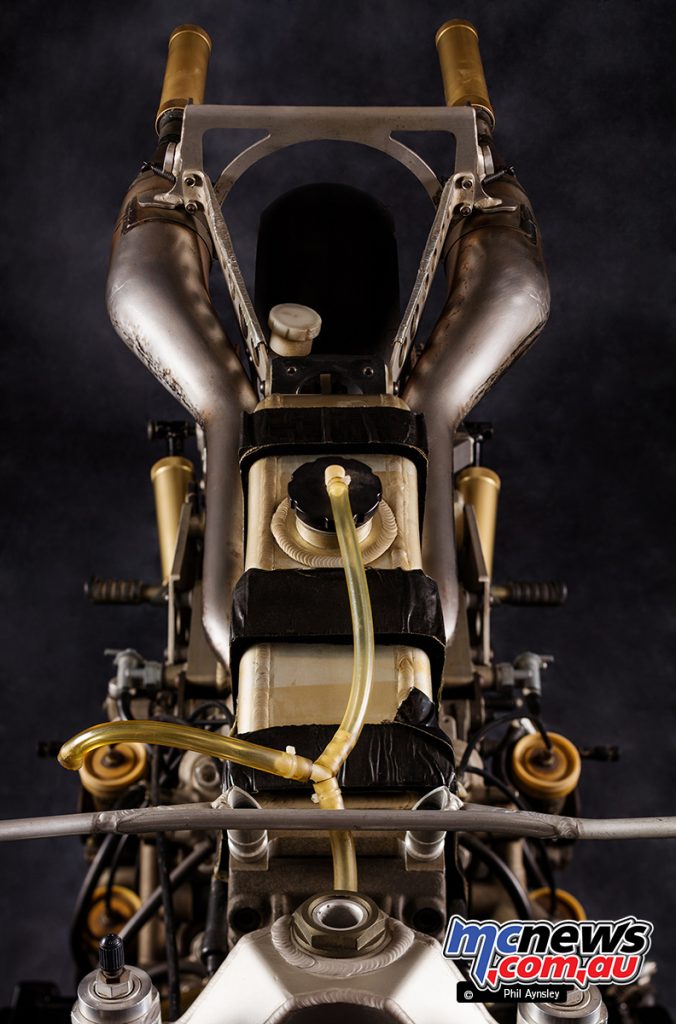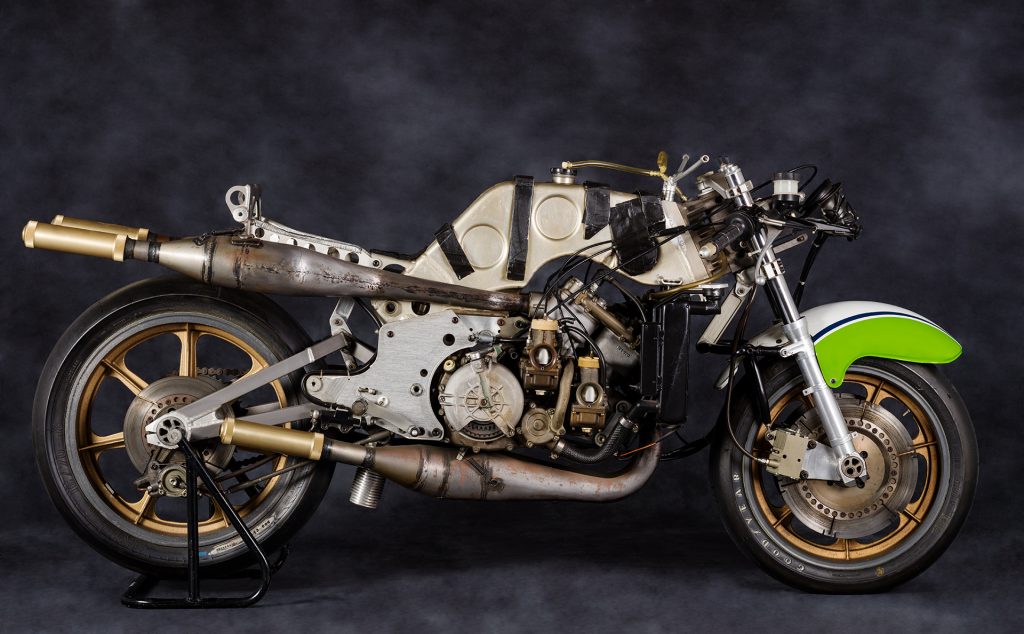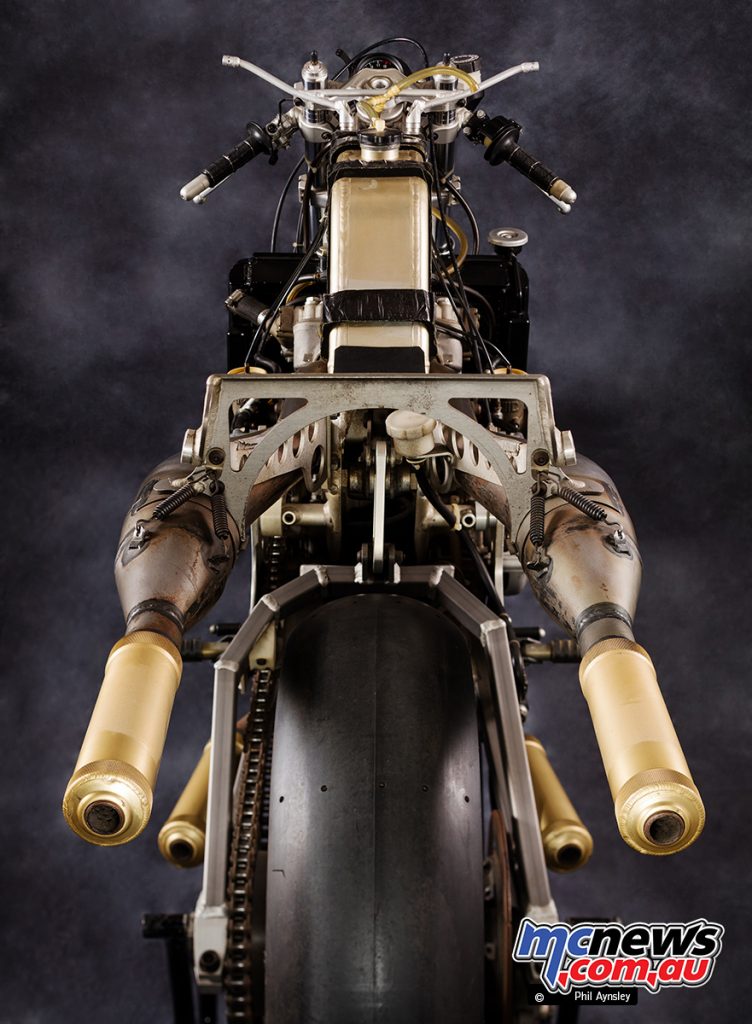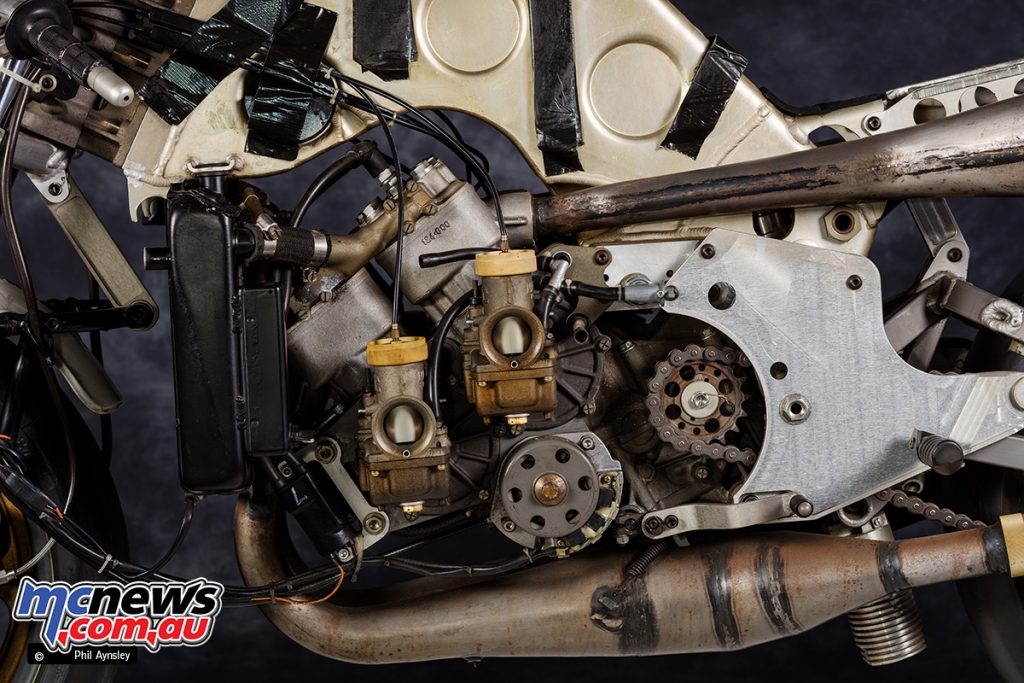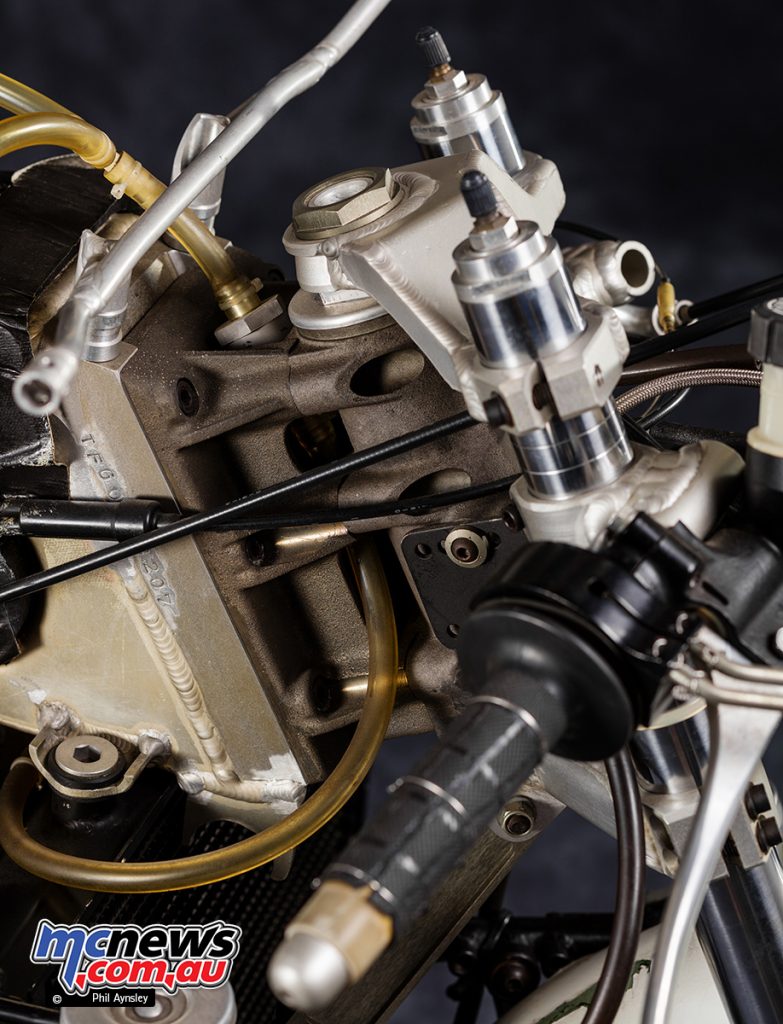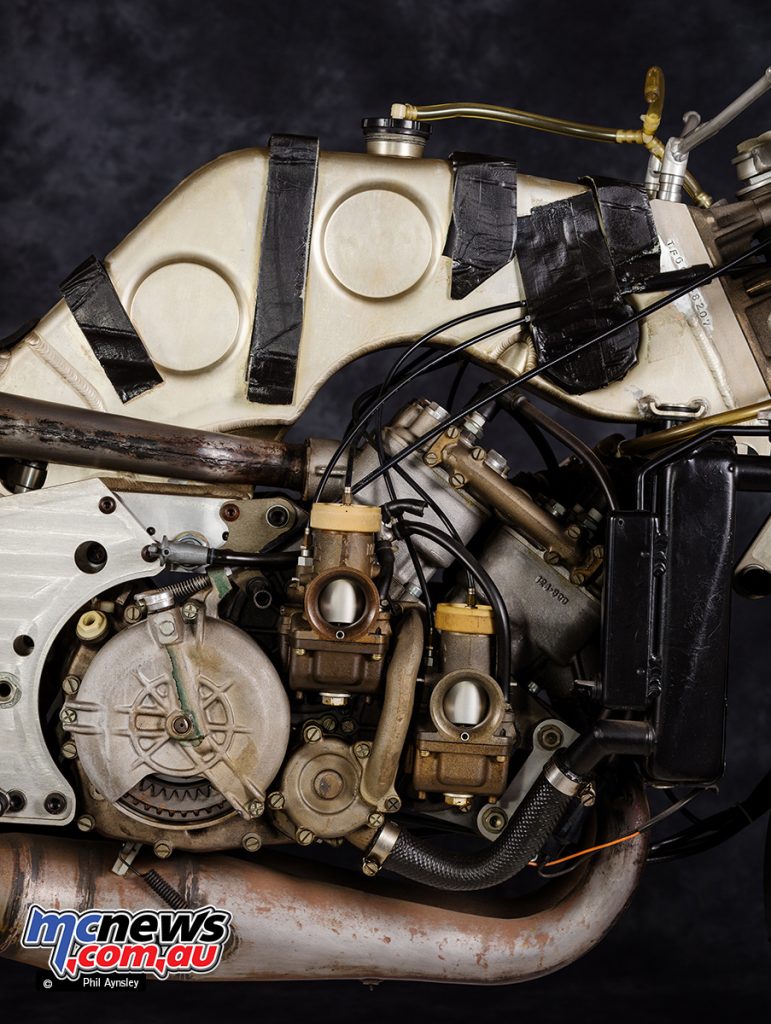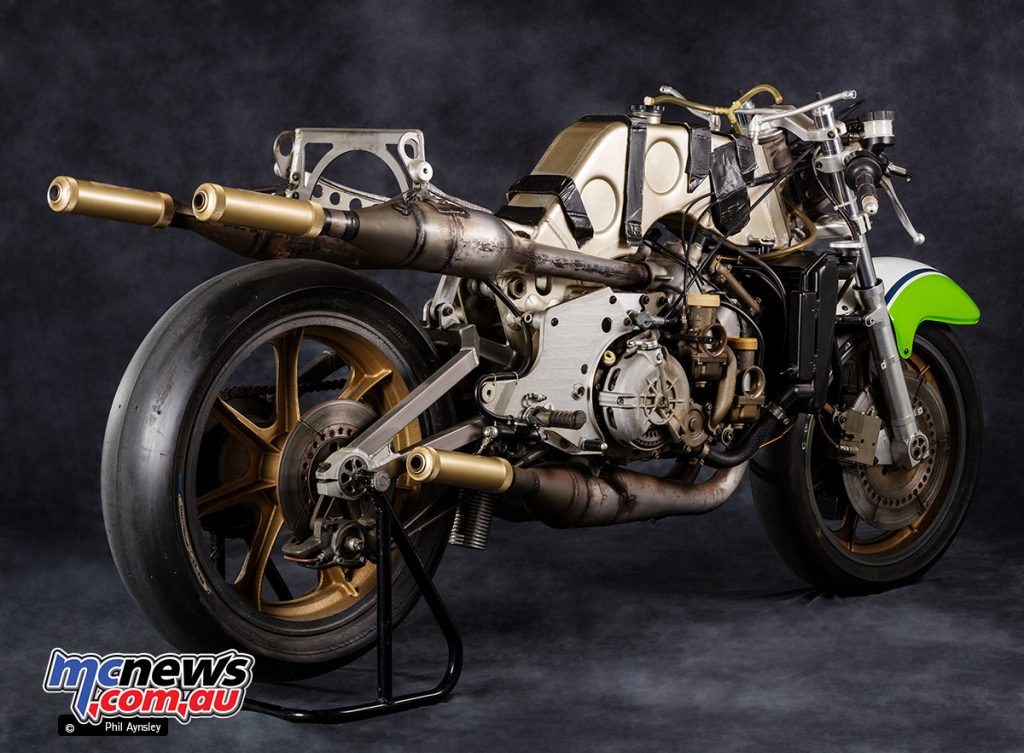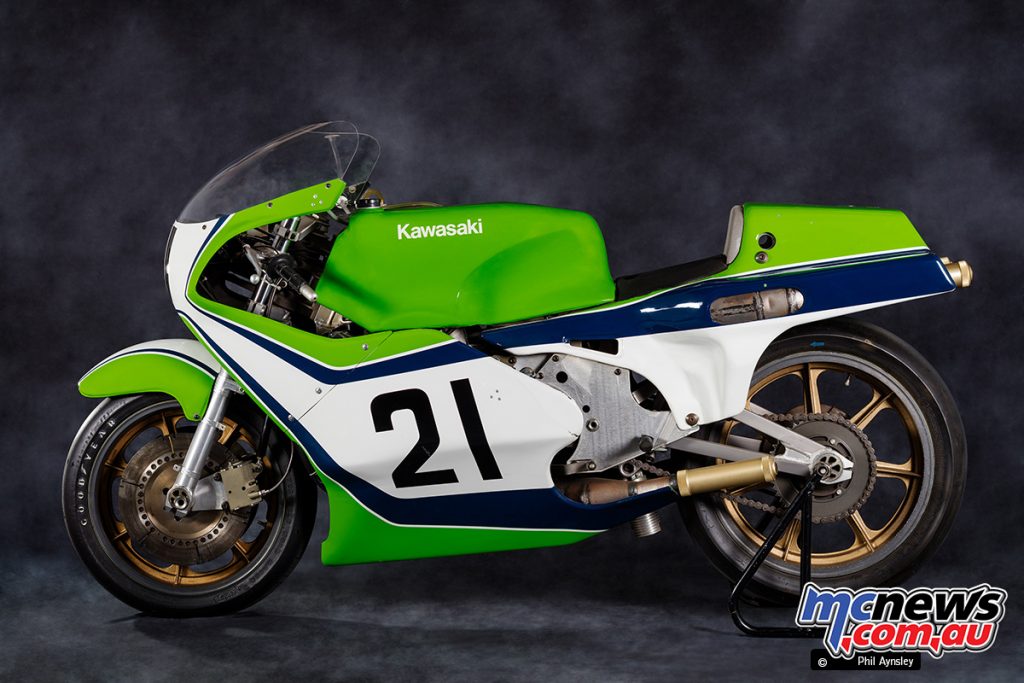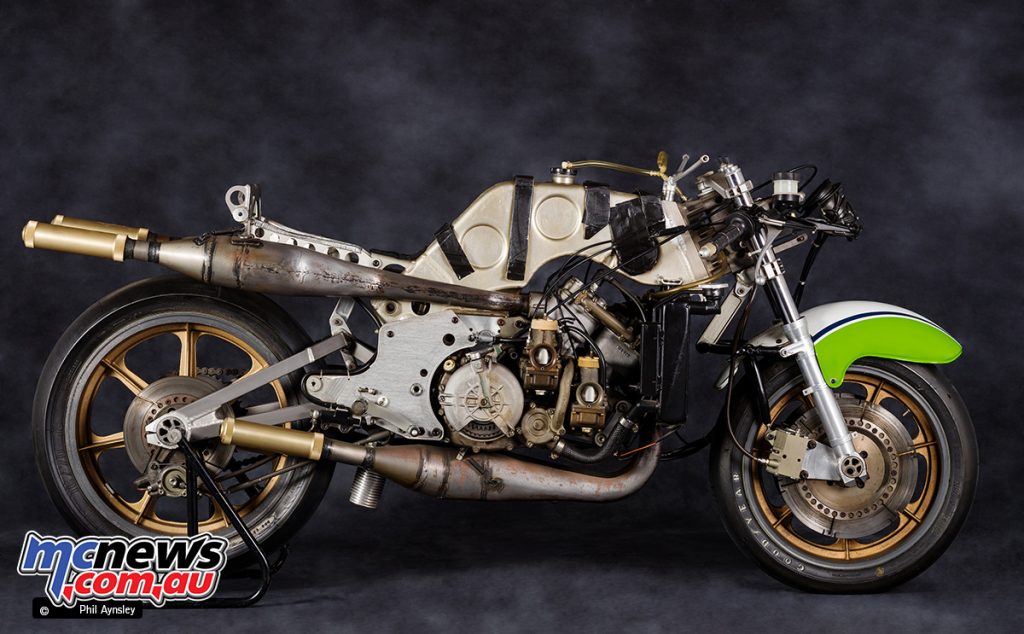Kawasaki’s KR500 two-stroke racer
With Phil Aynsley
The Kawasaki KR500 was one of those “almost, but not quite” bikes. Work started on the all-new design in 1979 and in typical Kawasaki fashion they went their own way, using an alloy monocoque chassis to house a square-four 2-stroke that used rotary disc valves but no exhaust port valves. There was no commonality with parts from the KR250/350.
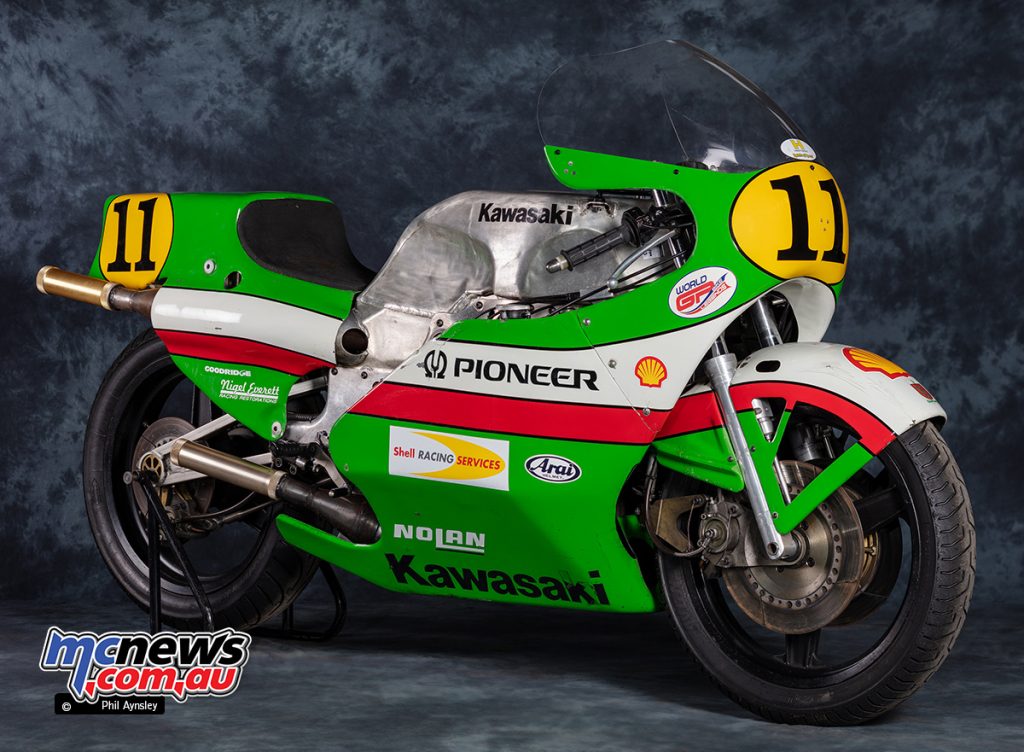
Kork Ballington rode the bike during its 1980 development year with a best result of 5th in Finland (Gregg Hansford rode in the final race of the year but had a DNF). Ballington found the bike to have competitive power but “about 40 pounds too heavy and the wheelbase 6 inches too long”. These two problems were to stay with the design throughout its life.
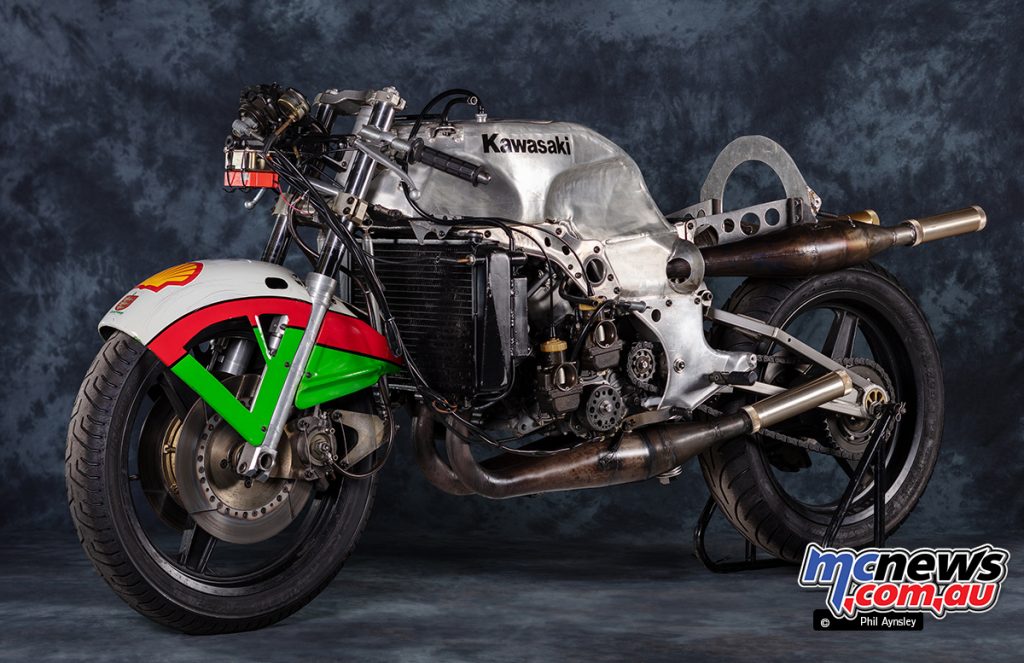
The 1981 version (the number 11 bike seen here) had several improvements compared to the previous year’s bike. The monocoque used a thinner alloy skin and the square section struts that braced the front of the motor were dispensed with (they had been found to induce a fierce vibration).
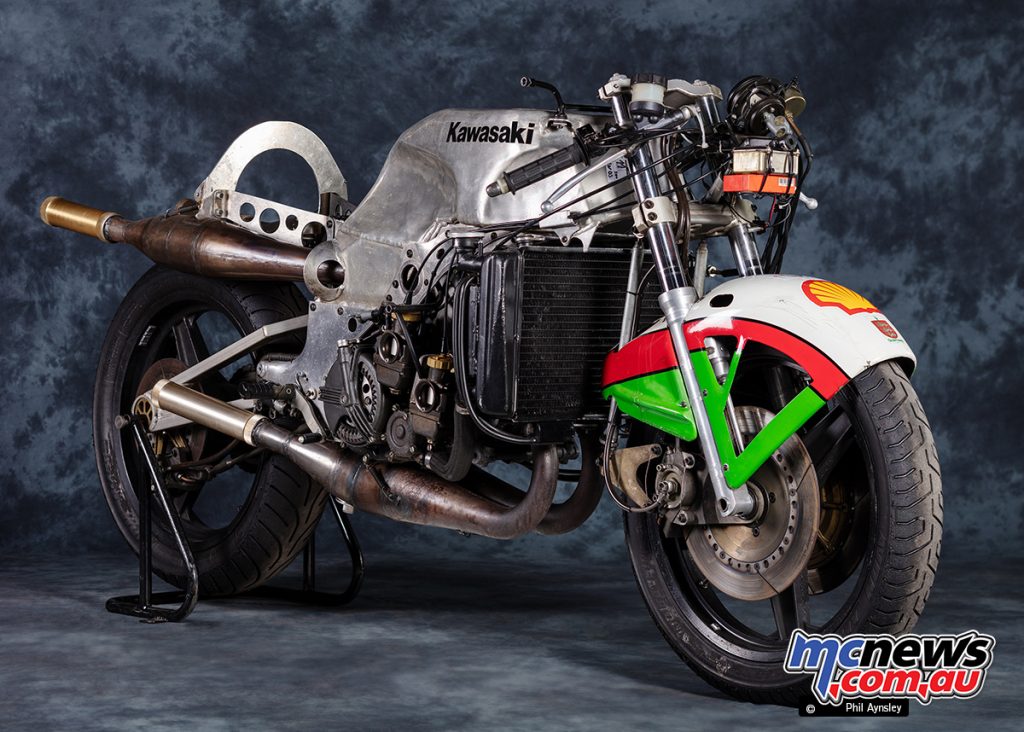
A mechanical anti-dive system was used and the aerodynamics were improved. The result was a slightly lighter bike but without a major step forward.
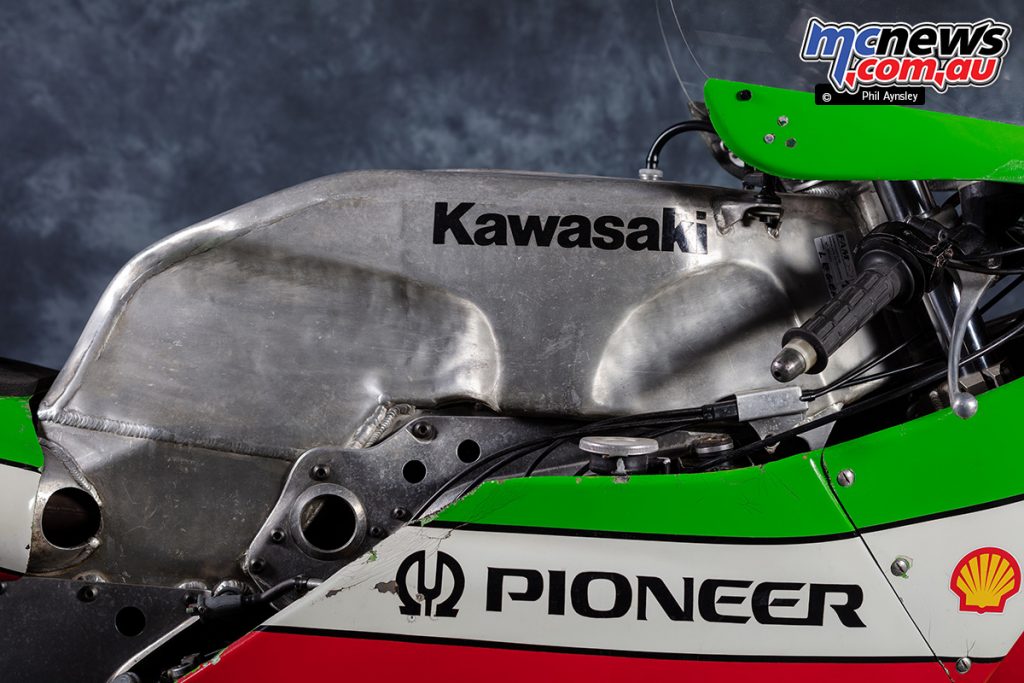
Hansford tested the bike here in Australia before the start of the season and qualified 1st at the Imola 200 before breaking his leg.
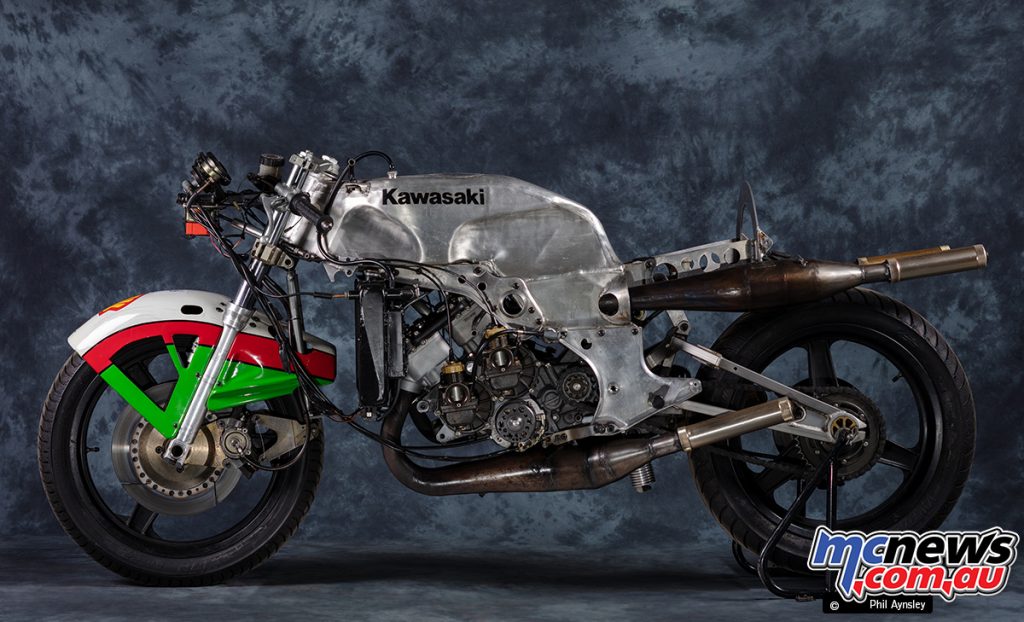
After his return from this injury he had his career-ending accident at Spa on this actual bike. Ballington went on to score 3rd places in the Dutch and Finish GPs and four other top ten finishes for an 8th place in the championship.
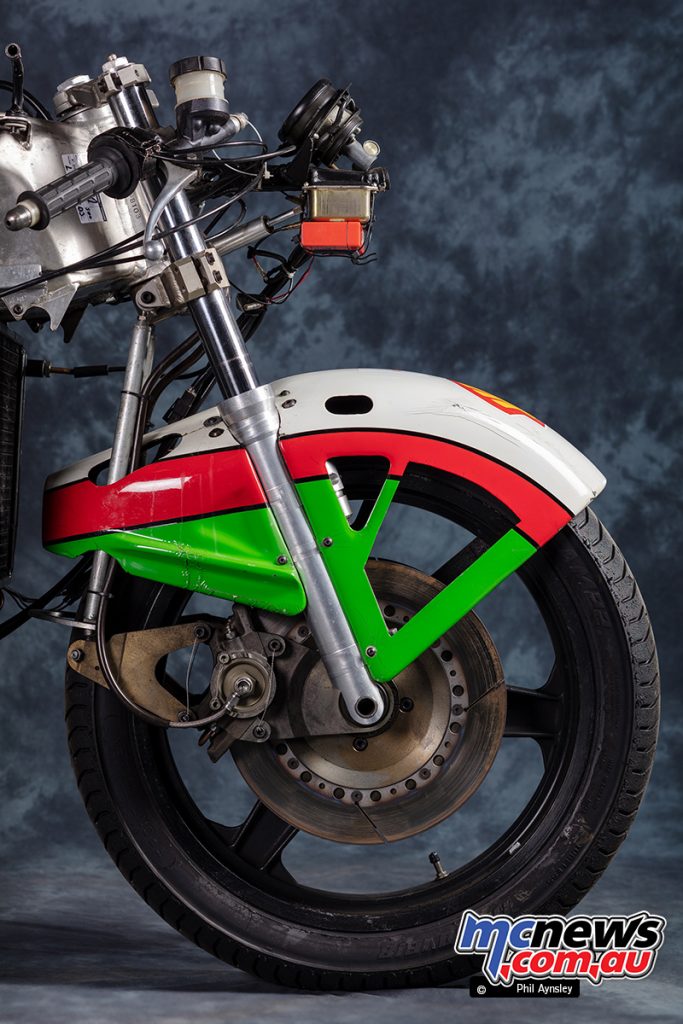
A shorter swingarm appeared for the British GP which both improved the handling and reduced the stress on the rear tyre.
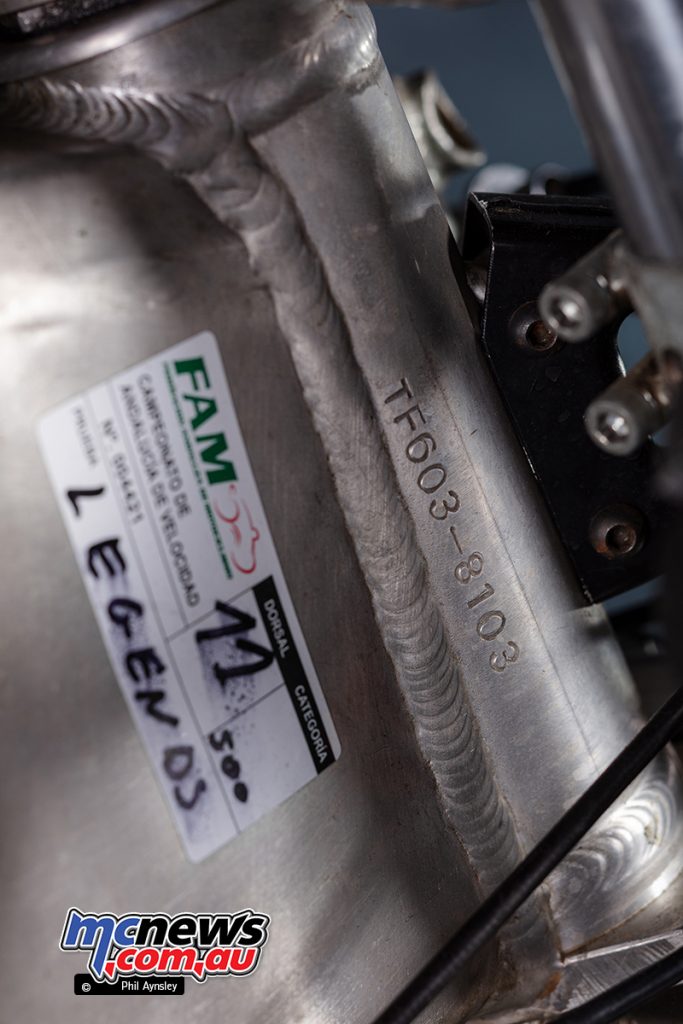
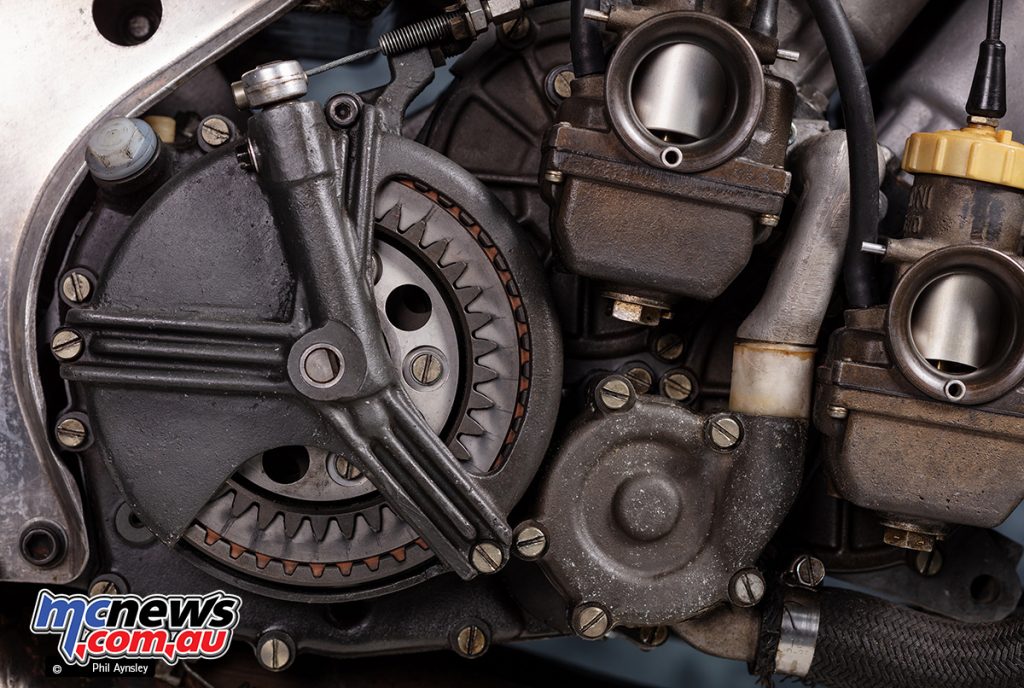
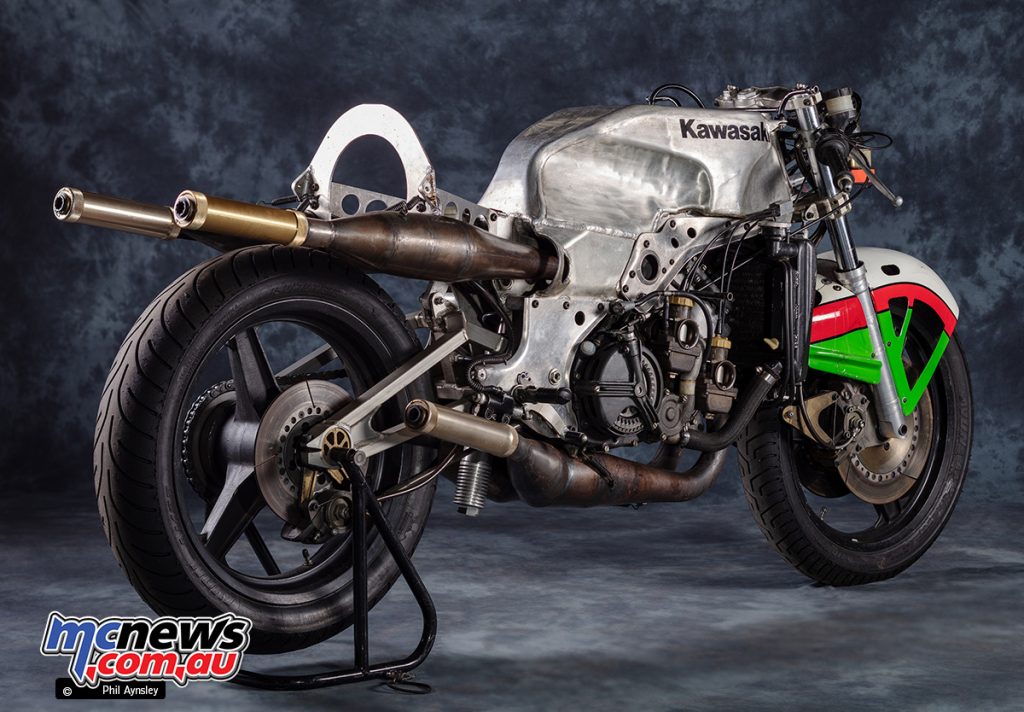
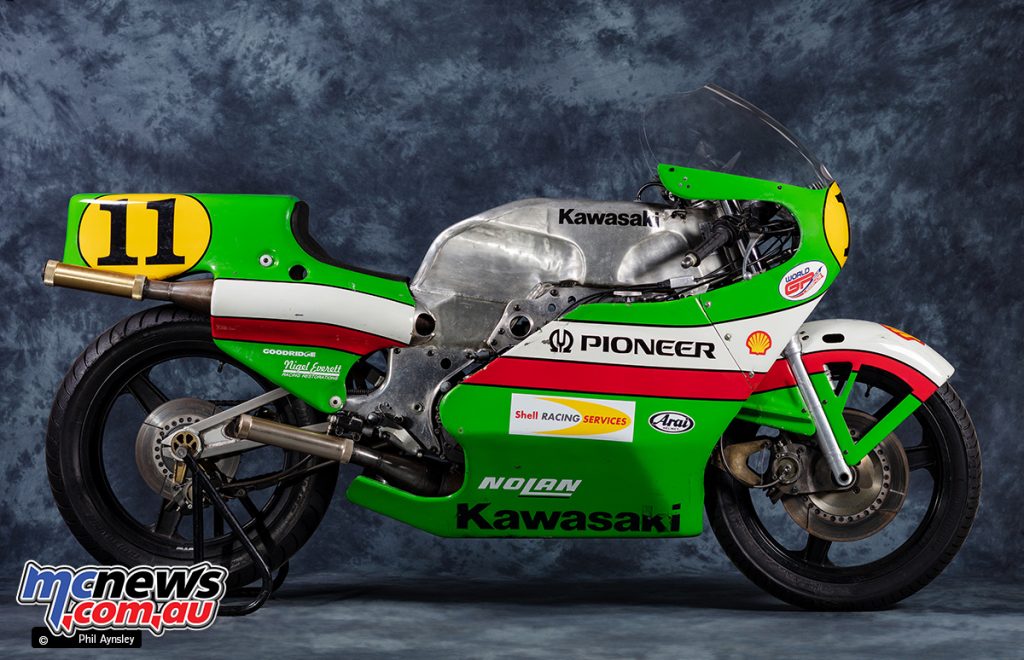
For 1982 the bike received a completely new chassis, still a monocoque but now with a spine frame design which continued to hold the fuel.
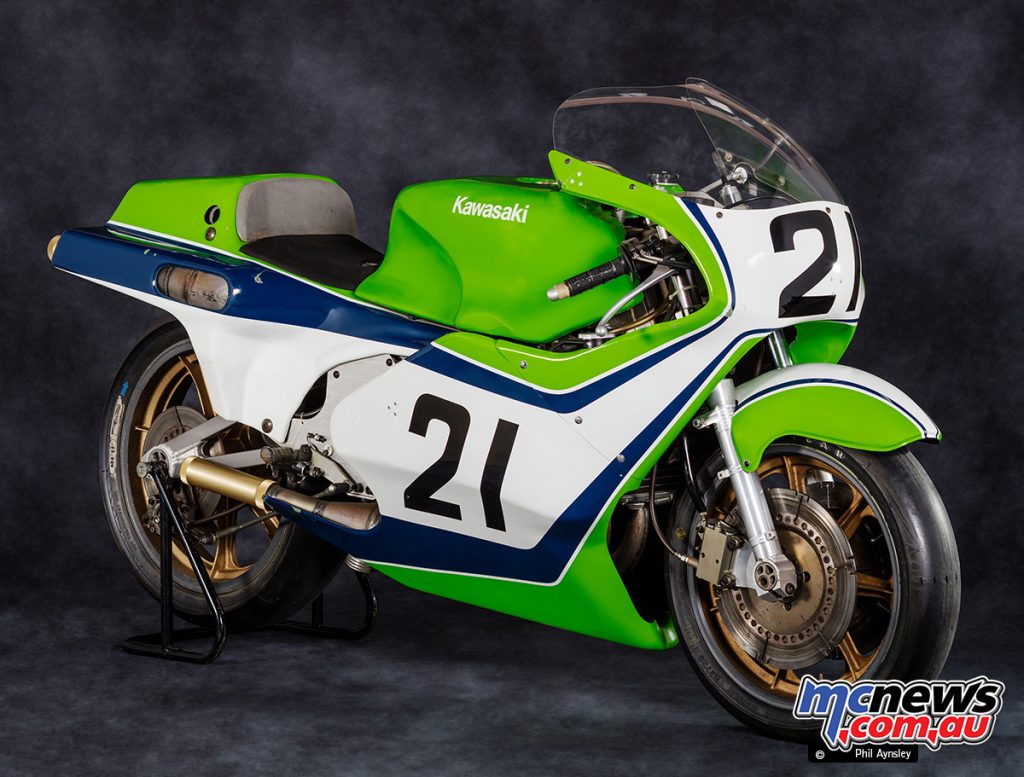
A seperate steering head was bolted to the front which enabled steering angle changes via tapered plates.
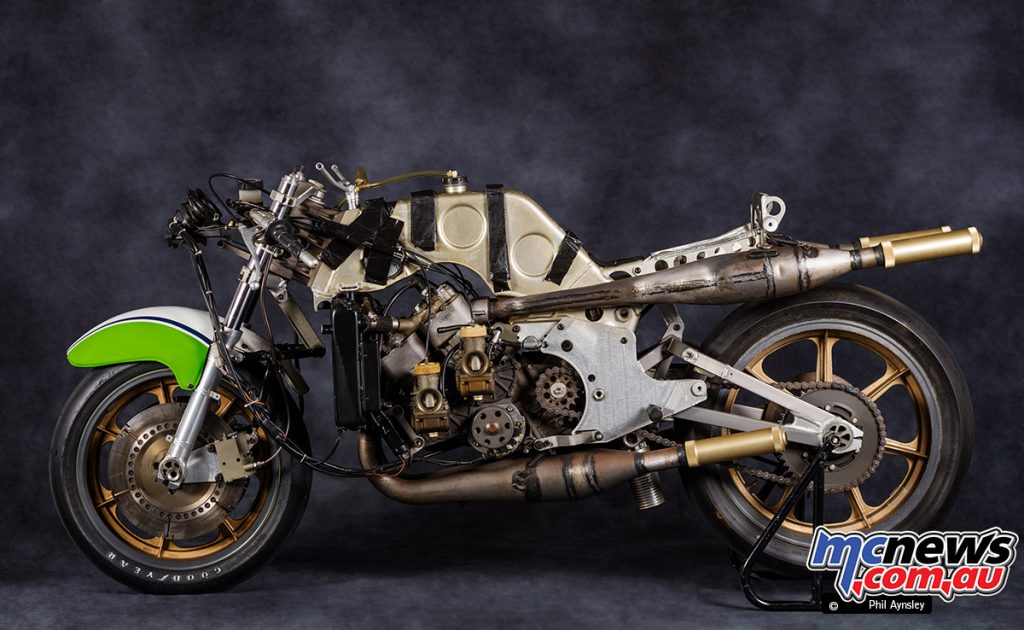
The anti-dive was changed to make it adjustable. By now the motor was probably the most powerful in the 500 class but the retention of the 16 inch front wheel when tyre development was moving to suit 17 inch hampered the bike’s overall performance; as did the move to Showa suspension. Ballington ended the season in 9th with nine top ten places.
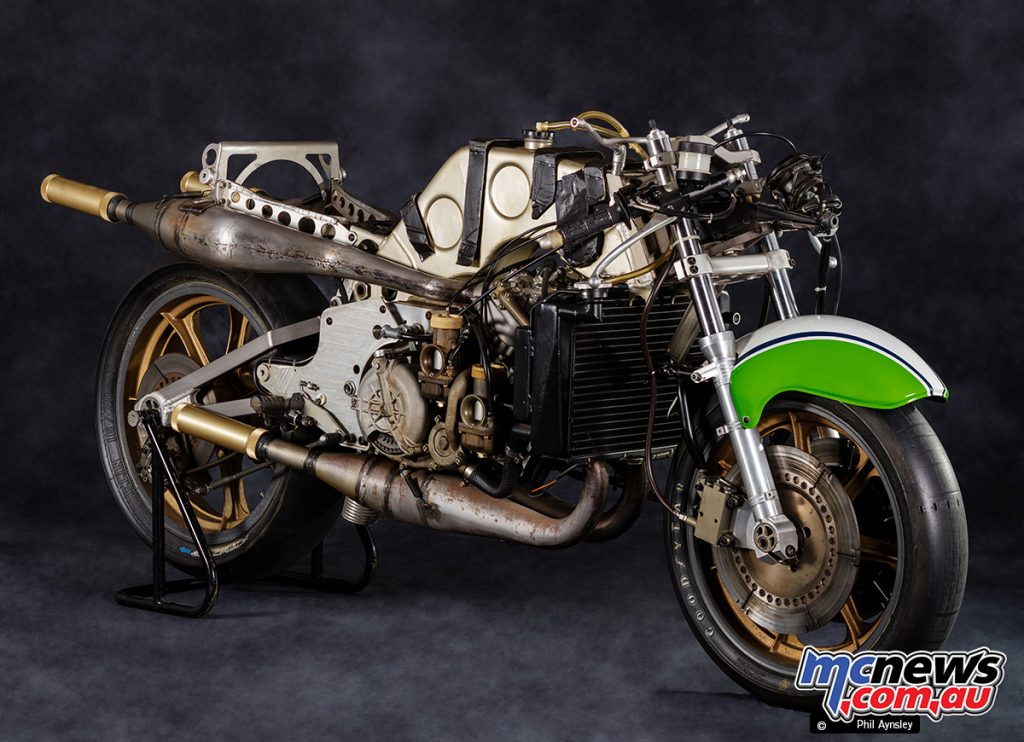
The number 21 bike is the 1982 bike raced by Eddie Lawson in the US (on which the led the Daytona 200 for many laps). Kawasaki withdrew from GP racing at the end of 1982 so the KR500’s career ended after only three years.
